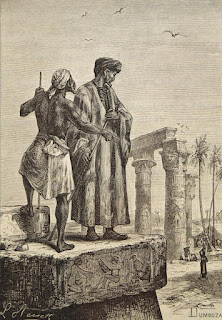To the beginning of photography in Texas
The world is awash with photographs. Anyone with a camera in hand is a photographer. Billions of photos are taken every day worldwide and a vast majority of them never even get a second look, let alone take a physical form, lost in the vast emptiness of the digital cloud. However, things were different back in the day. In the early 19th century, pioneers of photography were busy developing new techniques and demonstrating their results to the public, starting a revolution that would go on to transform the world. Practical photography was generally accepted to be born in 1839, the year Louis Daguerre commercially introduced the photographic process that he developed, which came to be known as the daguerreotype process . The photograph that was developed using this process was itself called a Daguerreotype . Parisian Louis Daguerre had been working on this process since the mid 1820s. The process was faster and demonstrated commercial viability making it the first successful photographic
.png)


